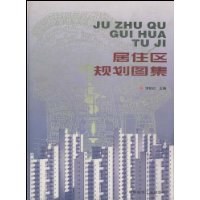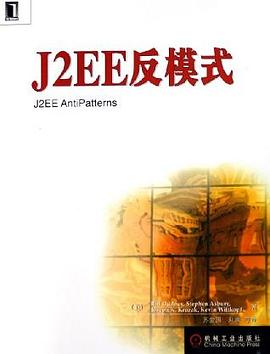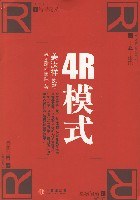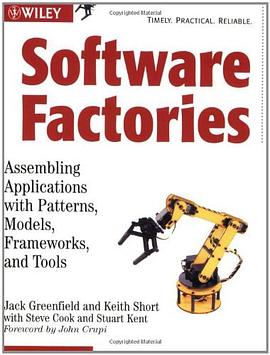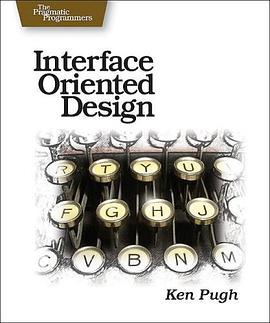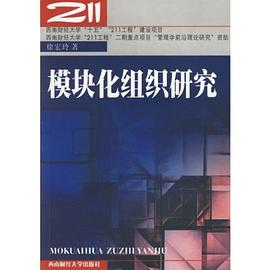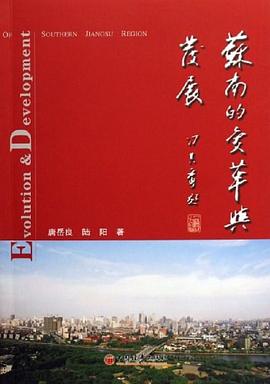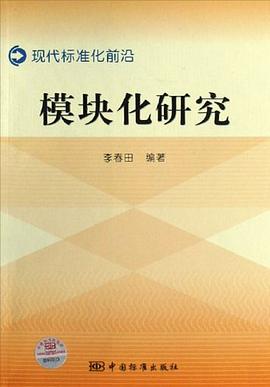

具体描述
《敏捷软件开发:原则、模式与实践(C#版)(英文版)》旨在指导.NET程序员学习构建软件的最佳实践,从而创建更好的设计并提升.NET应用的质量。书中使用真实案例讲解如何用极限编程来设计、测试、重构和结对编程,包含了极具价值的可重用的C#源代码,还重点讲述了如何使用UML和设计模式解决面向客户系统的问题。
《敏捷软件开发:原则、模式与实践(C#版)(英文版)》适于软件开发和管理人员提高自身水平学习之用,也适于用作高校计算机专业本科生、研究生以及软件学院的软件工程和软件开发相关课程的教材或参考书。 点击链接进入新版 :
软件开发方法学精选系列:敏捷软件开发:原则、模式与实践(C#版)(修订版)
作者简介
Robert C.Martin世界级的软件开发大师,著名软件咨询公司Object Mentor公司的创始人和总裁。曾经担任C++ Report杂志主编多年,也是设计模式和敏捷开发运动的主要倡导者之一。
目录信息
Chapter 1:Agile Practices 敏捷实践
The Agile Alliance 敏捷联盟
Individuals and Interactions over Processes and Tools人和交互重于过程和工具
Working Software over Comprehensive Documentation 可以工作的软件重于面面俱到的文档
Customer Collaboration over Contract Negotiation 客户合作重于合同谈判
Responding to Change over Following a Plan 随时应对变化重于遵循计划
Principles 原则
Conclusion 结论
Bibliography 参考文献
Chapter 2:Overview of Extreme Programming 极限编程概述
The Practices of Extreme Programming 极限编程实践
Whole Team 完整团队
User Stories 用户故事
Short Cycles 短交付周期
Acceptance Tests 验收测试
Pair Programming 结对编程
Test.Driven Development(TDD) 测试驱动开发
Collective Ownership 集体所有权
Continuous Integration 持续集成
Sustainable Pace 可持续的开发速度
Open Workspace 开放的工作空间
The Planning Game 计划游戏
Simple Design 简单设计
Refactoring 重构
Metaphor 隐喻
Conclusion 结论
Bibliography 参考文献
Chapter 3:Planning 计划
Initial Exploration 初始探索
Spiking,Splitting,and Velocity 探究、分解和速度
Release Planning 发布计划
Iteration Planning 迭代计划
Defining“Done” 定义“完成”
Tlask Planning 任务计划
Iterating 迭代
Tracking 跟踪
Conclusion 结论
Bibliography 参考文献
Chapter 4:Testing 测试
TIest-Driven Development 测试驱动开发
Example of Test-First Design 测试优先设计的例子
Test Isolation 测试促使模块之间隔离
Serendipitous Decoupling 意外获得的解耦合
Acceptance Tests 验收测试
Serendipitous Architecture 意外获得的构架
Conclusion 结论
Bibliography 参考文献
Chapter 5:Refactoring 重构
A Simple Example of Refactoring:Generating Primes 素数产生程序:一个简单的重构示例
Unit Testing 单元测试
Refactoring 重构
The Final Reread 最后审视
Conclusion 结论
Bibliography 参考文献
Chapter 6:A Programming Episode 一次编程实践
The Bowling Game 保龄球比赛
Conclusion 结论
Overview of the Rules of Bowling 保龄球规则概述
Section II Agile Design 敏捷设计
Chapter 7:What Is Agile Design 什么是敏捷设计
Design Smells 设计臭味
Design Smells——The Odors of Rotting Software 设计坏味——腐化软件的气味
Rigidity 僵化性
Fragility 脆弱性
Immobility 顽固性
Viscosity 粘滞性
Needless Complexity 不必要的复杂性
NeedLless Repetition 不必要的重复
Opacity 晦涩性
Why Software Rots 软件为何会腐化
The Copy Program Copy 程序
A Familiar Scenario 熟悉的场景
Agile Design of the Copy Program copy 程序的敏捷设计
Conclusion 结论
Bibliography 参考文献
Chapter 8:The Single-Responsibility Principle(SRP) SRP:单一职责原则
Defining a Responsibility 定义职责
Separating Coupled Responsibilities 分离耦合的职责
Persistence 持久化
Conclusion 结论
Bibliography 参考文献
Chapter 9:The Open/Closed Principle(OCP) OCP:开放-封闭原则
Description 0f OCP OCP概述
The Shape Application Shape 应用程序
Violating OCP 违反OCP
Conforming to OCP 遵循OCP
Anticipation and“Natural”Structure 预测变化和“贴切的”结构
Putting the“Hooks”In 放置吊钩
Using Abstraction to Gain Explicit Closure使用抽象获得显式封闭
Using a Data-Driven Approach to Achieve Closure 使用“数据驱动"的方法获取封闭性
Conclusion结论
Bibliography参考文献
Chapter 10:The Liskov Substitution Principle(LSP) LSP:Liskov替换原则
Violations 0f LSP 违反LS P的情形
A Simple Example 简单例子
A More Subtle Violation 更微妙的违反情形
A Real-World Example 实际的例子
Factoring Instead of Deriving 用提取公共部分的方法代替继承
Heuristics and Conventions 启发式规则和习惯用法
Conclusion 结论
Bibliography 参考文献
Chapter 11:The Dependency-Inversion Principle(DIP) DIP:依赖倒置原则
Layering 层次化
Ownership Inversion 倒置的接口所有权
Dependence on Abstractions 依赖于抽象
A Simple DIP Example 简单的DIP示例
Finding the Underlying Abstraction 找出潜在的抽象
The Furnace Example 熔炉示例
Conclusion 结论
Bibliography 参考文献
Chapter 12:The Interface Segregation Principle(ISP) ISP:接口隔离原则
Interface Pollution 接口污染
Separate Clients Mean Separate Interfaces 分离客户就是分离接口
Class Interfaces versus Object Interfaces 类接口与对象接口
Separation Through Delegation 使用委托分离接口
Separation Through Multiple Inheritance 使用多重继承分离接口
The ATM User Interface Example ATM用户界面的例子
Conclusion 结论
Bibliography 参考文献
Chapter 13:Overview of UML for C# Programmers C#程序员UML概观
Class Diagrams 类图
Object Diagrams 对象图
Sequence Diagrams 顺序图
Collaboration Diagrams 协作图
State Diagrams 状态图
Conclusion 结论
Bibliography 参考文献
Chapter 14:Working with Diagrams 使用UML
Why Model? 为什么建模
Why Build Models of Software? 为什么构建软件模型
Should We Build Comprehensive Designs Before Coding? 编码前应该构建面面俱到的设计吗
Making Effective Use of UML 有效使用UML
Communicating with Others 与他人交流
Road Maps 脉络图
Back-End Documentation 项目结束文档
What to Keep and What to Throw Away 要保留的和要丢弃的
Iterative Refinement 迭代式改进
Behavior First 行为优先
Check the Structure 检查结构
Envisioning the Code 想象代码
Evolution of Diagrams 图的演化
When and How to Draw Diagrams 何时以及如何绘制图示
When to Draw Diagrams and When to Stop 何时要画图,何时不要画图
CASE Tools CASE工具
But What About Documentation? 那么,文档呢
Conclusion 结论
Chapter 15 State Diagrams 状态图
The Basics 基础知识
Special Events 特定事件
Superstates 超状态
Initial and Final Pseudostates 初始伪状态和结束伪状态
Using FSM Diagrams 使用FSM图示
Conclusion 结论
Chapter 16:Object Diagrams 对象图
A Snapshot in Time 即时快照
Active Objects 主动对象
Conclusion 结论
Chapter 17:Use Cases 示例
Writing Use Cases 编写用例
Alternate Courses 备选流程
What Else? 其他东西呢
Diagramming Use Cases 用例图
Conclusion 结论
Bibliography 参考文献
Chapter 18:Sequence Diagrams 顺序图
The Basics 基础知识
Obj ects,Lifelines,Messages,and Other Odds and Ends 对象、生命线、消息及其他
Creation and Destruction 创建和析构
Simple Loops 简单循环
Cases and Scenarios 时机和场合
Advanced Concepts 高级概念
Loops and Conditions 循环和条件
Messages That Take Time 耗费时间的消息
Asynchronous Messages 异步消息
Multiple Threads 多线程
Active Objects 主动对象
Sending Messages to Interfaces 向接口发送消息
Conclusion 结论
Chapter 19:Class Diagrams 类图
The Basics 基础知识
Classes 类
Association 关联
Inheritance 继承
An Example Class Diagram 类图示例
The Details 细节
Class Stereotypes 类衍型
Abstract Classes 抽象类
Properties 属性
Aggregation 聚集
Composition 组合
Multiplicity 多重性
Association Stereotypes 关联衍型
Nested Classes 内嵌类
Association Classes 关联类
Association Qualifiers 关联修饰符
Conclusion 结论
Bibliography 参考文献
Chapter 20 Heuristics and C0ffee 咖啡的启示
The Mark IV Special Coffee Maker Mark IV型专用咖啡机
Specification 规格说明书 260
A Common but Hideous Solution 常见的丑陋方案
Imaginary Abstraction 虚构的抽象
An Improved Solution 改进方案
Implementing the Abstract Model 实现抽象模型
The Benefits of This Design 这个设计的好处
Ooverkill 面向对象过度设计
Bibliography 参考文献
Section Ⅲ The Payroll Case Study 薪水支付案例研究
Rudimentary Specification of the Payroll System 薪水支付系统的初步规格说明
Exercise 练习
Use Case 1:Add New Employee 用例1:增加新雇员
Use Case 2:Deleting an Employee 用例2:删除雇员
Use Case 3:Post a Time Card 用例3:登记考勤卡
Use Case 4:Posting a Sales Receipt 用例4:登记销售凭条
Use Case 5:Posting a Union Service Charge 用例5:登记工会服务费
Use Case 6:Changing Employee Details 用例6:更改雇员明细
Use Case 7:Run the Payroll for Today 用例7:现在运行薪水支付系统
Chapter 21:Command and Active Object:Versatility and Multitasking COMMAND模式和ACTlVE OBJECT模式:多功能与多任务
Simple Commands 简单的Command
Transactions 事务
Physical and Temporal Decoupling 实体上解耦和时间上解耦
Temporal Decoupling 时间上解耦
Undo Method Undo()方法
Active Object ACTIVE OBJECT模式
Conclusion 结论
Bibliography 参考文献
Chapter 22:Template Method and Strategy:Inheritance versus Delegation TEMPLATE METHOD模式和STRATEGY模式:继承和委托
Template Method TEM PLATE METHOD模式
Pattern Abuse 滥用模式
Bubble Sort 冒泡排序
Strategy STRATEGY模式
Conclusion 结论
Bibliography 参考文献
Chapter 23:Facade and Mediator FACAD E模式和MEDIATOR模式
Facade FACADE模式
Mediator MEDIATOR模式
Conclusion 结论
Bibliography 参考文献
Chapter 24:Singleton and Monostate SINGLETON模式和MONOSTATE模式
Singleton SINGLETON模式
Benefits SINGLETON模式的好处
Costs SINGLETON模式的代价
Singleton in Action 运用SINGLETON模式
Monostate MONOSTATE模式
Benefits MONOSTATE模式的好处
Costs MONOSTATE模式的代价
Monostate in Action 运用MONOSTATE模式
Conclusion 结论
Bibliography 参考文献
Chapter 25:Null Object NULL OBJECT
Description 描述
Conclusion 结论
Bibliography 参考文献
Chapter 26:The Payroll Case Study:Iteration 1 薪水支付案例研究:第一次迭代开始
Rudimentary Specification 初步的规格说明
Analysis by Use Cases 基于用例分析
Adding Employees 增加新雇员
Deleting Employees 删除雇员
Posting Time Cards 登记考勤卡
Posting Sales Receipts 登记销售凭条
Posting a Union Service Charge 登记工会服务费
Changing Employee Details 更改雇员明细
Payday 发薪日
Reflection:Finding the Underlying Abstractions 反思:找出底层的抽象
Employee Payment 雇员支付类别抽象
Payment Schedule 支付时间表抽象
Payment Methods 支付方式
Affiliations 从属关系
Conclusion 结论
Bibliography 参考文献
Chapter 27:The Payroll Case Study:Implementation 薪水支付案例研究:实现
Transactions 事务
Adding Employees 增加雇员
Deleting Employees 删除雇员
Time Cards,Sales Receipts,and Service Charges 考勤卡、销售凭条以及服务费用
Changing EmplOyees 更改雇员属性
What Was I Smoking? 犯了什么晕
Paying Employees 支付雇员薪水
Paying Salaried Employees 支付领月薪的雇员薪水
Paying Hourly Employees 支付钟点工薪水
Main Program 主程序
The Database 数据库
Conclusion 结论
About This Chapter 关于本章
Bibliography 参考文献
Section IV:Packaging the Payroll System 打包薪水支付系统
Chapter 28:Principles of Package and Component Design 包和组件的设计原则
Packages and Components 包和组件
Principles of Component Cohesion:Granularity 组件的内聚性原则:粒度
The Reuse/Release Equivalence Principle(REP) 重用-发布等价原则
The Common Reuse Principle(CRP) 共同重用原则
The Common Closure Principle(CCP) 共同封闭原则
Summary of Component Cohesion 组件内聚性总结
Principles of Component Coupling:Stability 组件的耦合陛原则:稳定性
The Acyclic Dependencies Principle(ADP) 无环依赖原则
The Stable-Dependencies Principle(SDP) 稳定依赖原则
The Stable-Abstractions Principle(SAP) 稳定抽象原则
Conclusion 结论
Chapter 29:Factory FACTORY模式
A Dependency Problem 依赖问题
Static versus Dynamic Typing 静态类型与动态类型
SubStitutable Factories 可替换的工厂
Using Factories for TIest Fixtures 对测试支架使用对象工厂
Importance of Factories 工厂的重要性
Conclusion 结论
Bibliography 参考文献
Chapter 30:The Payroll Case Study:Package Analysis 薪水支付案例研究:包分析
Component Structure and Notation 组件结构和符号
Applying the Common Closure Principle(CCP) 应用CCP
Applying the Reuse/Release Equivalence Principle(REP) 应用REP
Coupling and Encapsulation 耦合和封装
Metrics 度量
Applying the Metrics to the Payroll Application 度量薪水支付应用程序
Object Factories 对象工厂
Rethinking the Cohesion Boundaries 重新思考内聚的边界
The Final Packaging Structure 最终的包结构
Conclusion 结论
Bibliography 参考文献
Chapter 31:Composite COMPOSITE模式
Composite Commands 组合命令
Multiplicity or No Multiplicity 多重性还是非多重性
Conclusion 结论
Chapter 32:Observer:Evolving into a Pattern OBSERVER——演化至模式
The Digital Clock 数字时钟
The Observer Pattern OBSERVER模式
Models 模型
Management of OOD Principles 面向对象设计原则的运用
Conclusion 结论
Bibliography 参考文献
Chapter 33:Abstract Server,Adapter,and Bridge ABSTRACTSERVER模式、ADAPTER模式和BRIDGE模式
Abstract Server ABSTRACT SERVER模式
Adapter ADAPTER模式
The Class Form of Adapter 类形式ADAPTER模式
The Mode,m Problem,Adapters,and LSP 调制解调器问题、适配器以及LSP
Bridge BRIDGE模式
Conclusion 结论
Bibliography 参考文献
Chapter 34:Proxy and Gateway:Managing Third-Party APIs PROXY模式和GATEWAY模式:管理第三方API Proxy PROXY 模式
Implementing Proxy 实现PROXY模式
Summary 小结
Databases,Middleware,and Other Third.Party Interfaces 数据库、中间件以及其他第三方接口
Table Data Gateway TABLE DATA GATEWAY
Testing and In.Memory TDGs 测试和内存TDG
Testing the DB Gateways 测试DbGateWay
Using Other Patterns with Databases 可以用于数据库的其他模式
Conclusion 结论
Bibliography 参考文献
Chapter 35:Visitor VISITOR模式
VISITOR VISITOR模式
Acyclic Visitor ACYCLIC VISITOR模式
Uses of VISITOR 使用VISITOR模式
Decorator DECORATOR模式
Extension Object EXTENSION OBJECT模式
Conclusion 结论
Bibliography 参考文献
Chapter 36:State STATE模式
Nested Switch/Case Statements 嵌套switch/case语句
The Internal Scope State Variable 内部作用域的状态变量
Testing the Actions 测试动作
Costs and Benefits 代价和收益
Transition Tables 迁移表
Using Table Interpretation 使用表解释
Costs and Benefits 代价和收益
The State Pattern STATE模式
State versus Strategy STATE模式和STRATEGY模式
Costs and Benefits 代价和收益
The State Machine Compiler(SMC) 状态机编译器
Turnstile.CS Generated by SMC,and Other Support Files SMC生成的Turnstile.CS以及其他支持文件 593
Costs and Benefits 代价和收益
Classes of State Machine Application 状态机应用的场合
High-Level Application Policies for GUIs 作为GUI中的高层应用策略
GUI Interaction Controllers GUI交互控制器
Distributed Processing 分布式处理
Conclusion 结论
Bibliography 参考文献
Chapter 37:The Payroll Case Study:The Database 薪水支付案例研究:数据库
Building the Database 构建数据库
A Flaw in the Code Design 一个代码设计缺陷
Adding an Employee 增加雇员
Transactions 事务
Loading an Employee 加载Employee对象
What Remains? 还有什么工作
Chapter 38:The Payroll User Interface:Model View Presenter 薪水支付系统用户界面:Model-View-Presenter
The Interface 界面
Implementation 实现
Building a Window 构建窗口
The Payroll Window Payroll 窗口
The Unveiling 真面目
Conclusion 结论
Bibliography 参考文献
Appendix A:A Satire of Two Companies 双公司记
Rufus Inc.:Proj ect Kickoff Rufus公司:“日落”项目 671 Rupert Industries:Project Alpha Rupert工业公司:“朝晖”项目
Appendix B:What Is Software? 什么是软件
Index索引
· · · · · · (收起)
读后感
评分
评分
评分
评分
用户评价
和重构一样,这本书对我而言就是开启心智——除了这两本书外,其他书对我而言只能说是开拓视野。
评分和重构一样,这本书对我而言就是开启心智——除了这两本书外,其他书对我而言只能说是开拓视野。
评分和重构一样,这本书对我而言就是开启心智——除了这两本书外,其他书对我而言只能说是开拓视野。
评分和重构一样,这本书对我而言就是开启心智——除了这两本书外,其他书对我而言只能说是开拓视野。
评分和重构一样,这本书对我而言就是开启心智——除了这两本书外,其他书对我而言只能说是开拓视野。
相关图书
本站所有内容均为互联网搜索引擎提供的公开搜索信息,本站不存储任何数据与内容,任何内容与数据均与本站无关,如有需要请联系相关搜索引擎包括但不限于百度,google,bing,sogou 等
© 2026 book.quotespace.org All Rights Reserved. 小美书屋 版权所有





